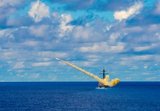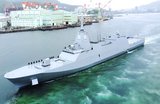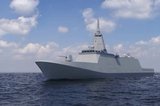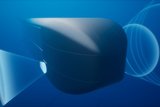USS Gerald R Ford propulsion mods completed
The US Navy and Huntington Ingalls Industries-Newport News Shipbuilding (HII-NNS) have completed the maintenance and repair of the propulsion plant for the USS Gerald R Ford nuclear-powered aircraft carrier.
Completed on 22 July, this follows some 12 months of work to the powerplant of CVN 78, the lead example in this class of carrier, and the modification has now been accepted by the USN, marking progress in the vessel’s post-shakedown availability (PSA).
‘For the past year or so, the focus has been supporting the shipyard in propulsion plant production work,’ said Cdr Emily Bassett, from Edmonds, Washington, the ship’s reactor officer.
‘With hard work, innovation, and teamwork, reactor department sailors and their shipyard counterparts together have achieved a major milestone. We now enter the transition phase, where our focus shifts from a shipyard production work mindset to a ship’s force operational and maintenance mindset.’
During Ford’s PSA, sailors worked alongside HII-NNS shipyard technicians to complete 400,000 hours of maintenance and production work to reach this milestone, but Ford sailors are still working to get the ship ready to join the rest of the fleet and return to sea to complete additional aircraft carrier qualifications.
Problems with the propulsion system were first noted while conducting trials at sea in January 2018, when the crew identified a component in the propulsion train that was operating outside of design specifications.
In May 2018, three days into planned testing and evaluation, the ship experienced another propulsion plant issue associated with a design modification which resulted in Ford returning to homeport. Once in Norfolk, adjustments were made and the ship returned to sea later that month.
Ford returned to port on 7 June 2018, following the successful completion of all required ship testing during its at sea period. During these tests, the USN and Newport News Shipbuilding determined the required steps to correct the manufacturing problems that would be fully corrected during Ford’s PSA.
Ford’s propulsion issues were not with the nuclear reactors themselves, but the mechanical components associated in turning steam created by the nuclear plant into spinning screws that propel the ship through the water, the USN says.
Related Equipment in Defence Insight
More from Naval Warfare
-
![NATO tests use of “undetectable, jam-proof” laser communication in maritime scenarios]()
NATO tests use of “undetectable, jam-proof” laser communication in maritime scenarios
As part of its effort to better prepare its capabilities for operations in contested and congested scenarios, NATO evaluated a Lithuanian ship-to-ship terminal designed to not be susceptible to enemy interference.
-
![Future of the Canadian Patrol Submarine Project is still unclear]()
Future of the Canadian Patrol Submarine Project is still unclear
The Canadian government remains tight-lipped on the timeline and funding required for the next steps of its Canadian Submarine Patrol Project, which should offer improved capabilities for the country’s navy.
-
![Mitsubishi eyes future with Australia’s Mogami selection]()
Mitsubishi eyes future with Australia’s Mogami selection
With Australia’s selection of the Mogami-class for Project Sea 3000, Mitsubishi is investigating local production in the next decade as potential export opportunities emerge.
-
![Thales’ new Sonar 76Nano could equip UK Royal Navy on anti-submarine warfare missions]()
Thales’ new Sonar 76Nano could equip UK Royal Navy on anti-submarine warfare missions
The new sonar is designed to equip uncrewed underwater vessels, with the potential to be used by the Royal Navy for its Atlantic Bastion and Atlantic Net missions.























